3 Things B2B Marketers Must Do to Stay Ahead of Google
Google’s Knowledge Graph has yet to fully invade the B2B world, but it does have a dramatic impact on the average decision maker’s purchase process. Because of it’s current reshaping of Google search results, and it’s constant steady expansion, the Graph is not something that B2B marketers can afford to ignore. An up-to-date understanding of today’s users will enable B2B marketers to keep earning more of the right search traffic.
B2B Knowledge Graph Entries
Marketers are already noticing some interesting B2B Knowledge Graph entries.
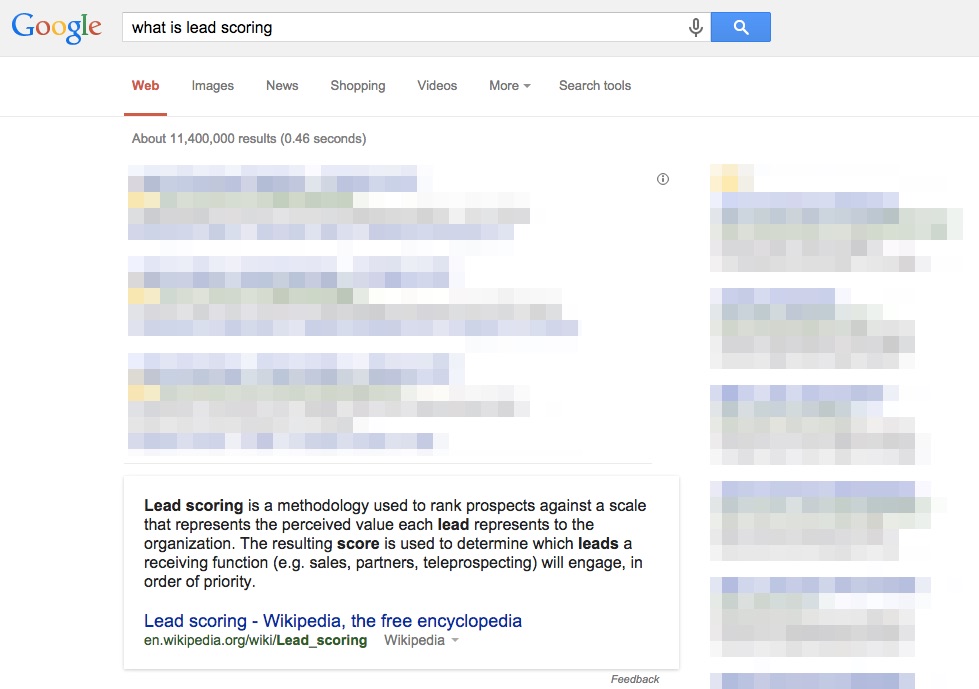 As of the time of writing, the Google ads and the Knowledge Graph definition of lead scoring (from Wikipedia) pushed almost all other organic search results below the fold.
As of the time of writing, the Google ads and the Knowledge Graph definition of lead scoring (from Wikipedia) pushed almost all other organic search results below the fold.
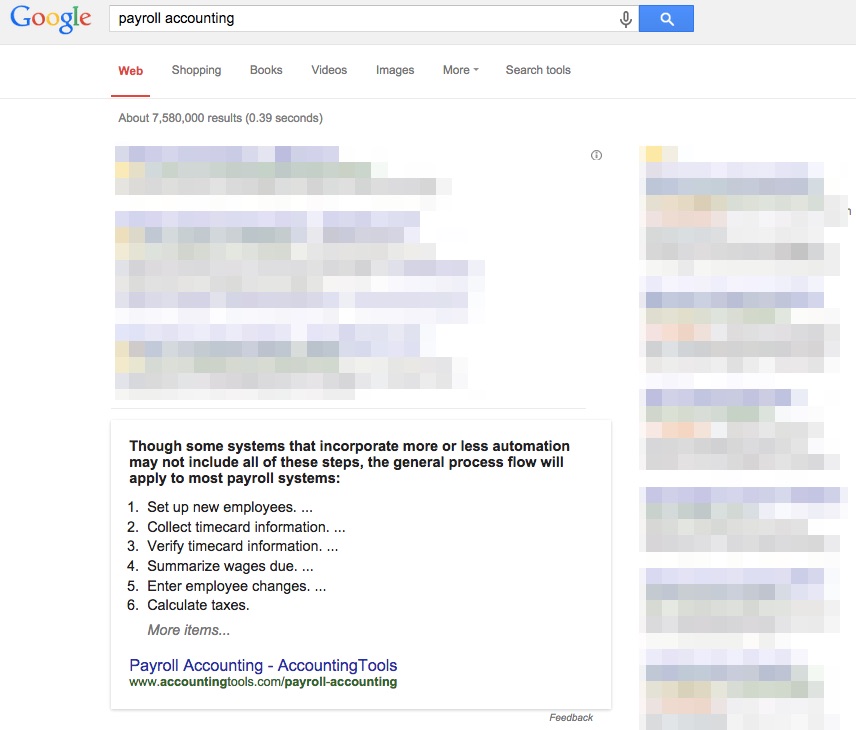 A search for “payroll accounting” shows a list of steps from accountingtools.com.
A search for “payroll accounting” shows a list of steps from accountingtools.com.
B2B Decision Makers May Click Thru Less, but Still Have Specific Questions
Knowledge Graph offerings from answer boxes to side panels are training Google users to trust their landing pages for quick, easy answers. Buyers who are just beginning their research might find their initial answers scraped from a brand website into a Knowledge Graph answer box, which means businesses are losing opportunities to influence the buyer’s brand preference at the top of the funnel. A brand whose content gets scraped may get a slight edge as Google’s trusted source, but it’s unlikely that users are noting the URL sourced—especially if they’re not clicking for more info. 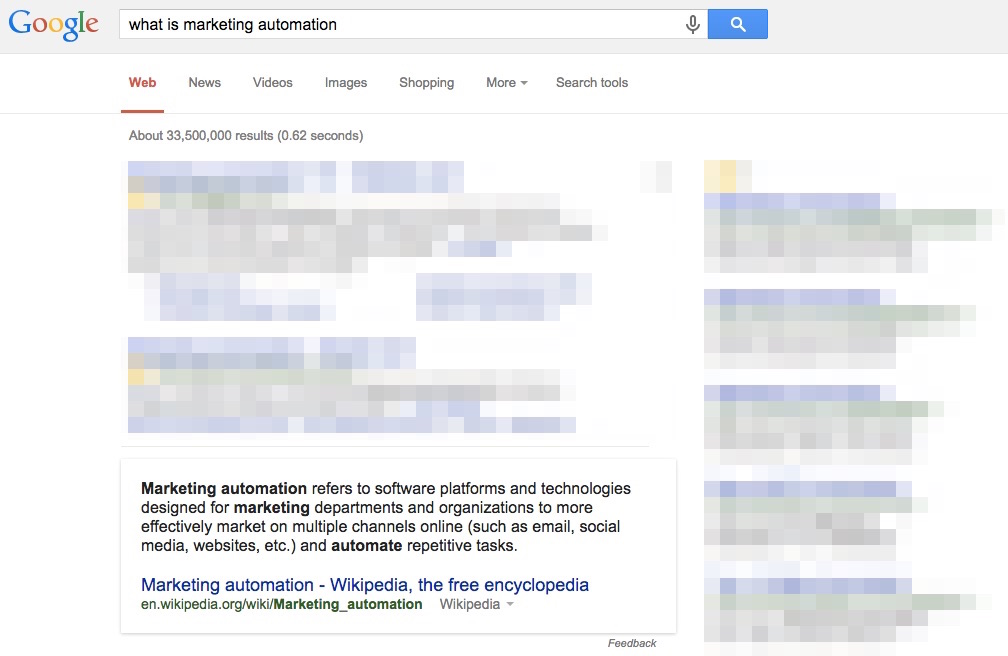 Decision makers who are further along on their buying journey will scroll past the ads and the answer boxes to scan the rest of the search results for sources of deeper information. That means B2B marketers should be acutely focused on creating compelling search snippets—titles, URLs, and meta data descriptions: the short piece of text that represents your landing page in search results—in order to attract the search traffic that might actually convert.
Decision makers who are further along on their buying journey will scroll past the ads and the answer boxes to scan the rest of the search results for sources of deeper information. That means B2B marketers should be acutely focused on creating compelling search snippets—titles, URLs, and meta data descriptions: the short piece of text that represents your landing page in search results—in order to attract the search traffic that might actually convert.
How B2B Marketers Can Earn the Right Traffic
It might be nice if your information gets scraped into Google’s answer box, but the B2B marketer’s time would be better spent on earning the interest of the buyer who scrolls for more in-depth information. There are three keys to earning that kind of traffic.
1 – Create Compelling Search Snippets
Brush off your copywriting hat and create search snippets that stand out on the search results page, so serious buyers will click through to your landing pages. Strategic snippets incorporate as many of the following four characteristics as possible:
- CTA—Incorporate some call-to-action language like, “buy, find, order, reserve, etc.” Buyers looking for deeper information have a problem they need solved, so let them know you mean to solve it.
- Keyword—Place your primary keyword as forward in the title or meta as possible, and include a semantic variation (or two) if you can do it naturally.
- Value proposition—There’s a lot of competition on a search results page. Why should the buyer choose you
- Uniqueness—Conduct your own depersonalized Google search for the primary keyword you are targeting and read some snippets. Then, do or say something that your competition is not. Stand out.
Monitor and improve your search snippets as needed. Keep an eye on click-through rates via Google’s Webmaster Tools. If people aren’t clicking, change it up and try something new.
2 – Earn High Rankings
Buyers will scroll, but they still probably won’t click over to page two. A holistic SEO strategy is still crucial for helping your content appear in the prized Google Top 10, and a big part of good SEO is still an authentic link-building strategy. Google ranks the value of a website by a lot of signals, but one of them is how many high-quality websites link back to yours. Spammy, purchased, low-quality links will hurt your reputation with Google, but relationship-based, earned links are still a valuable currency with search engines.
3 – Create Content That Answers Questions Quickly and Completely
First, that means rethinking your keyword strategy. Keywords are only the beginning as Google continues to update algorithms and push back against black hat SEO practices. Create content that speaks to a specific keyword + user intent combination. Secondly, make sure the content your brand publishes offers unique value, not just unique content. Any publisher can re-word and rework the same old piece of content to create something technically “unique,” but that doesn’t add value to your audience and it doesn’t separate your brand from the pack. Then, make sure you’re writing for the web reader. A classic Nielsen Norman Group study once looked at, “How Users Read on the Web,” and found—and I quote—”They don’t.” Lots of things have changed on the internet since 1997, but this is not one of them. Make your text scannable. Finally, remember that content loved by users and search engines alike is content that gives clear, brief, and concrete answers. (Like that paragraph.)
Is Your Brand’s Knowledge Graph Panel Accurate and Complete?
In addition to answer boxes that B2B marketers are learning to work through and around, the graph is pulling more and more brand information into sidebar panels—B2B brands included. 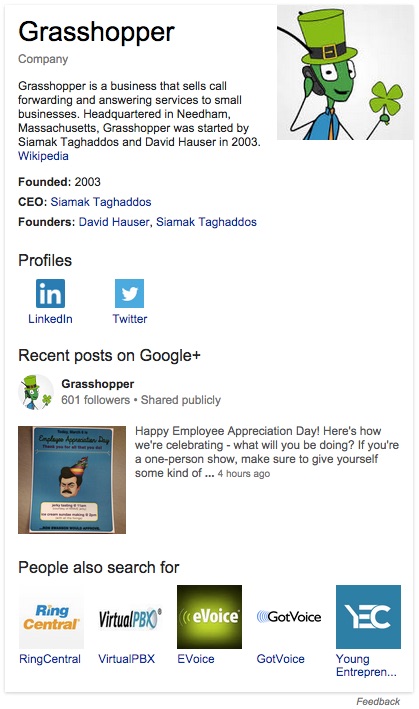
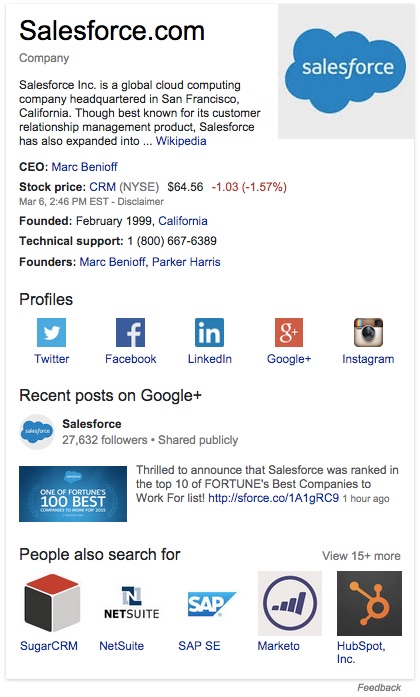 These Graph panels are your brand’s new first impression to web users, including decision makers and buyers, so it’s hard to overstate the importance of getting it right.
These Graph panels are your brand’s new first impression to web users, including decision makers and buyers, so it’s hard to overstate the importance of getting it right.
- Wikipedia—Much of the basic info in the panel comes from Wikipedia. Work with an experienced Wikipedia editor to produce or update your brand’s Wikipedia page (if your brand is eligible for one) to make sure you don’t violate community standards and norms.
- Google Plus—Photos and status updates from Google+ can also appear in your panel. Your updates will enrich your panel, but any Google+ user can tag your brand in photos so you want to make sure you’re monitoring the network.
- Structured markups—Markups like schima can help Google interpret the information on your site. Markups that identity details like your founding date, CEO, and social networks will help fill out your panel.
See if you have a Knowledge Graph panel by conducting a Google search for your brand name. If you do, get details on updating (or correcting) it, and start your relationship with the Knowledge Graph there.
Coming to a B2B Market Near You!
So far, the Knowledge Graph has primarily affect B2C brands, but there is no reason to think it won’t soon saturate the B2B market as well. Learn from B2C marketers’ mistakes and oversights, and get a head start by preparing your content and SEO strategies now.
What's Next?
Profound Strategy is on a mission to help growth-minded marketers turn SEO back into a source of predictable, reliable, scalable business results.
Start winning in organic search and turn SEO into your most efficient marketing channel. Subscribe to updates and join the 6,000+ marketing executives and founders that are changing the way they do SEO:
And dig deeper with some of our best content, such as The CMO’s Guide to Modern SEO, Technical SEO: A Decision Maker’s Guide, and A Modern Framework for SEO Work that Matters.




